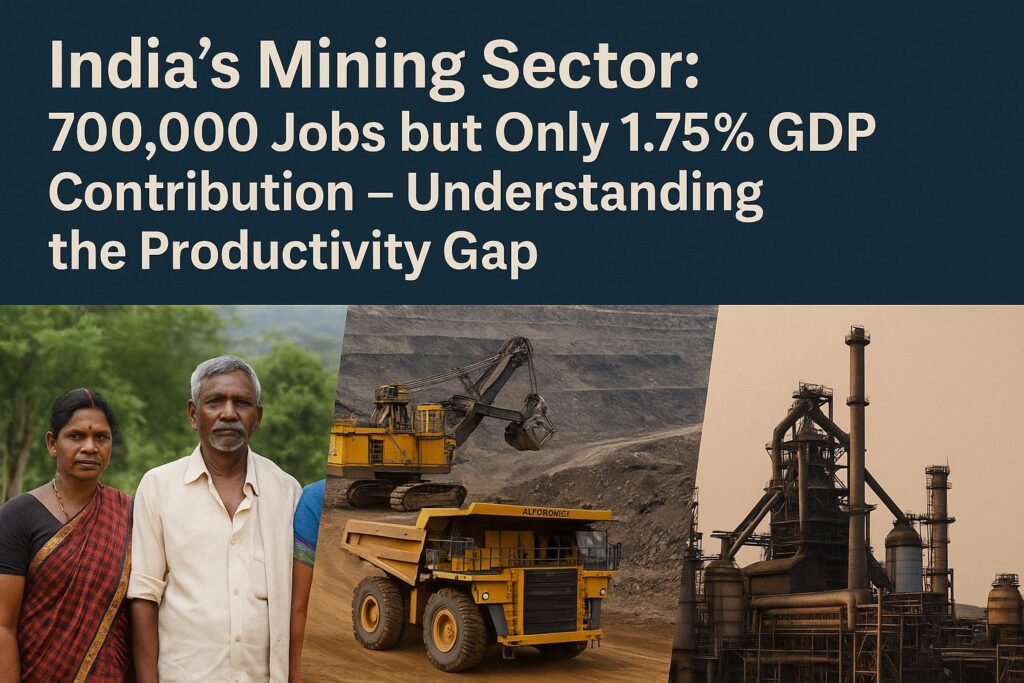Introduction: A Puzzle of Progress
India’s mining sector is a study in contradictions. On paper, it employs over 700,000 people and fuels 11% of the country’s industrial output. Yet, it contributes a meager 1.75% to India’s GDP—a figure dwarfed by sectors like IT (8%) and agriculture (15%). To put this in perspective, Australia’s mining sector, with fewer workers, contributes 10% to its GDP.
How can a sector so critical to industry deliver so little economically while displacing thousands of tribal communities?
Let’s unravel this paradox.
- Big Numbers: Small Returns
Mining in India isn’t just about coal or iron ore—it’s a lifeline for millions. But here’s the catch: most jobs here are low-skilled, informal, and perilous. Workers often toil with pickaxes and shovels in outdated, unsafe mines. Unlike Australia or Canada, where automation drives efficiency, India’s reliance on manual labor keeps productivity stagnant.
For instance, while Australia produces 1,500 tonnes of coal per worker annually, India manages just 250 tonnes.
This isn’t just about technology. The sector is riddled with informal contracts—nearly 90% of workers lack social security, pensions, or fair wages. Many are migrants or tribals lured by promises of steady income, only to find themselves trapped in cycles of debt and exploitation.
- The Industrial Illusion: Raw Exports, Lost Value
Mining contributes 11% to India’s industrial sector, but this figure masks a deeper flaw. Most minerals are exported as raw materials, leaving value addition to other nations. Take iron ore: India ships it to China, which processes it into steel and sells it back at five times the price. In 2022-23, India exported 6.6 Billion worth Iron Ore but, imported 15.3 Billion of Steel.
This isn’t just a trade gap—it’s a lost opportunity to build industries and create skilled jobs at home.
The problem extends to policy. Licensing delays, environmental clearances, and fragmented regulations deter investment in processing infrastructure. For example, it takes 5–7 years to operationalize a mine after discovery. By contrast, Australia streamlined approvals to under 18 months, attracting global firms like BHP and Rio Tinto.
- The Human Cost: Displacement Without Development
Behind the numbers lies a human tragedy. Mining projects in states like Odisha, Jharkhand, and Chhattisgarh have displaced over 2.6 million people since 1950, most from PVTG (Particularly Vulnerable Tribal Groups) communities. Take the Dongria Kondh tribe in Odisha’s Niyamgiri Hills.
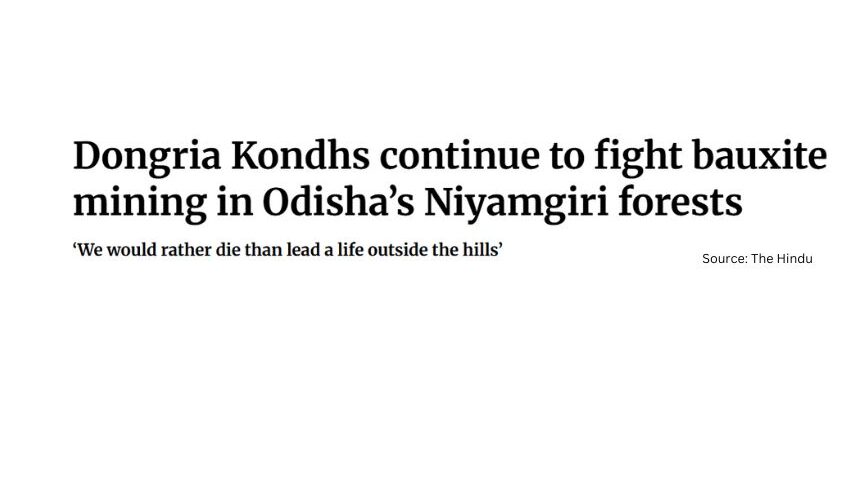
In 2013, they successfully resisted Vedanta’s bauxite mining project, arguing it would destroy their sacred forests and water sources.
Yet, their victory is rare. Most tribes aren’t so lucky.
Displacement rarely leads to rehabilitation. The Sardar Sarovar Dam project, for instance, displaced 40,000 families, but fewer than 25% received land or jobs. Mining zones see a similar pattern: tribal lands are acquired for coal mines, but locals get only contractual roles as drivers or guards—jobs that vanish once mines are exhausted.
Why Does This Paradox Persist?
- Policy Paralysis
India’s mining laws are a tangled web. The Forest Rights Act (2006) mandates tribal consent for projects on forest land, but it’s often bypassed. The District Mineral Foundation (DMF), designed to share mining royalties with affected communities, is plagued by corruption. In Jharkhand, only 30% of DMF funds reached tribal welfare projects in 2022.
- The Informal Economy Trap
Unregulated small mines, which employ 70% of workers, operate outside the formal economy. They dodge taxes, ignore safety norms, and underreport output. The result? Ghost mines in Rajasthan’s Aravalli hills generate illegal sand worth ₹1,200 crore annually, funding a mafia-politician nexus.
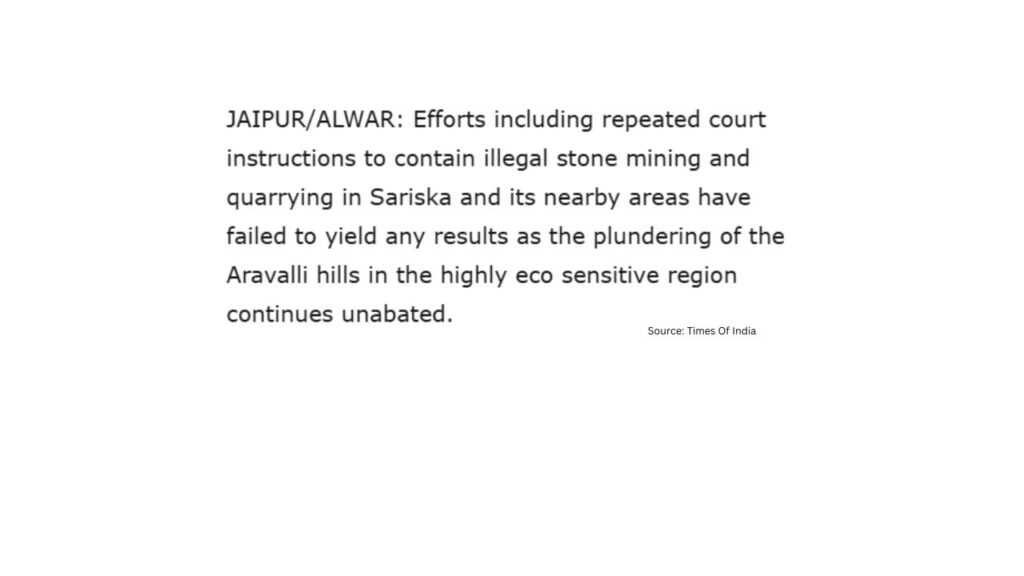
- Environmental Blind Spots
Mining degrades land and water, hitting agriculture—the primary livelihood for 60% of displaced tribals.
In Chhattisgarh’s Raigarh, coal mines contaminated groundwater, leaving farmers with barren fields.
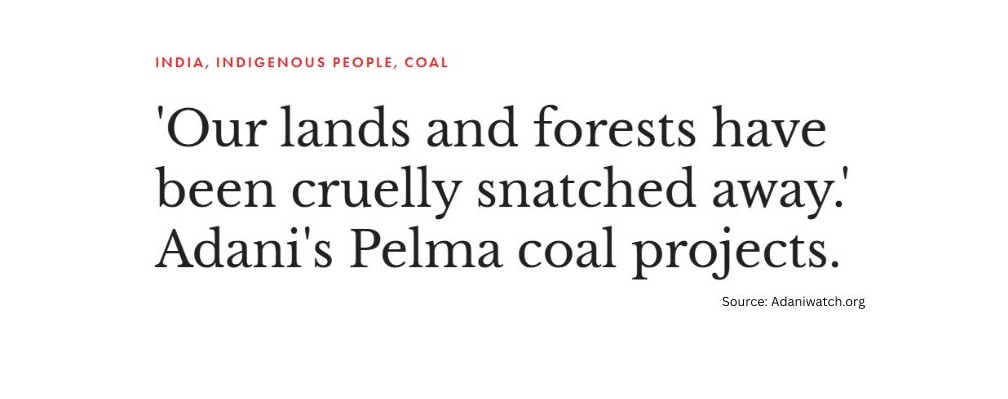
The economic loss?
₹500 crore annually in crop damage, as per a 2021 TERI report.
A Path Forward: Mining for People, Not Profits
1. Tech-Driven Productivity
Automation isn’t about replacing jobs—it’s about making mining safer and more efficient. Rio Tinto’s AutoHaul system in Australia runs driverless trains, cutting costs by 20%. India could adopt similar tech in state-owned giants like Coal India, which still relies on 1960s-era machinery.
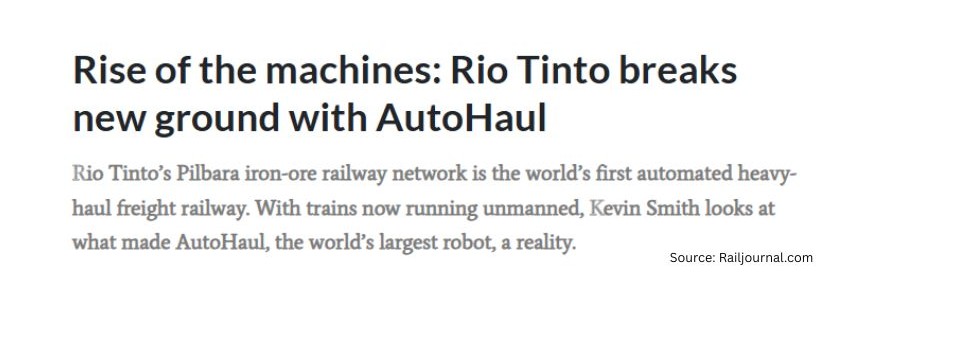
2. From Raw to Ready: Build Processing Hubs
Why export iron ore when we can make steel? States like Odisha must incentivize plants near mines. Japan’s POSCO once planned a $12 billion steel plant in Odisha; reviving such projects could create 50,000 skilled jobs and reduce import bills.

3. Tribal Justice: Consent and Revenue Sharing
The Niyamgiri model proves tribes can negotiate. Replicate it by enforcing Free, Prior, Informed Consent (FPIC) for all projects. Companies can Directly share mining royalties with families, as done in Alaska’s Permanent Fund, which pays residents annual dividends from oil wealth.

4. Green Mining, Green Jobs
Rehabilitate abandoned mines into solar farms or eco-tourism sites. In Germany, the Zollverein coal mine is now a UNESCO World Heritage Site and cultural hub. India’s Singrauli coal belt could follow suit.
Besides, Saving the planet can also be good for business! How? Check out this article.
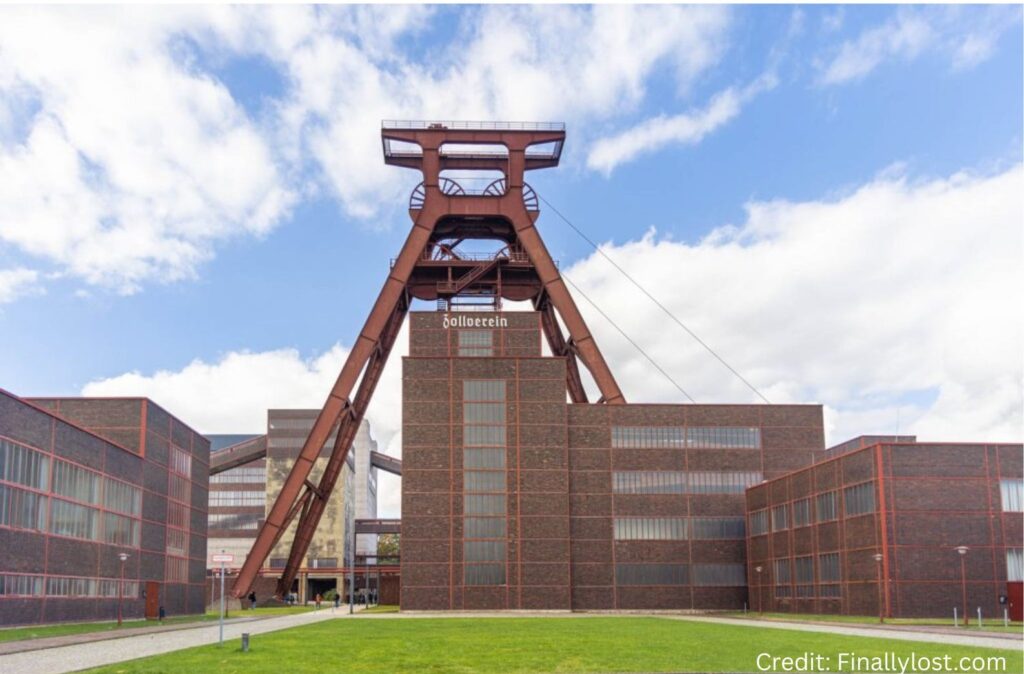
Conclusion: Rewriting the Story
India’s mining paradox isn’t inevitable—it’s a result of choices. By prioritizing tribal rights, embracing technology, and adding value to minerals, we can transform this sector into an engine of inclusive growth. Otherwise, we risk perpetuating a system where mountains of wealth coexist with valleys of poverty.
The question isn’t whether India needs mining. It’s whether mining needs to cost us our humanity.
Which one of the following do you think is the most valid reason for this low productivity of Indian mining sector? Comment below!

